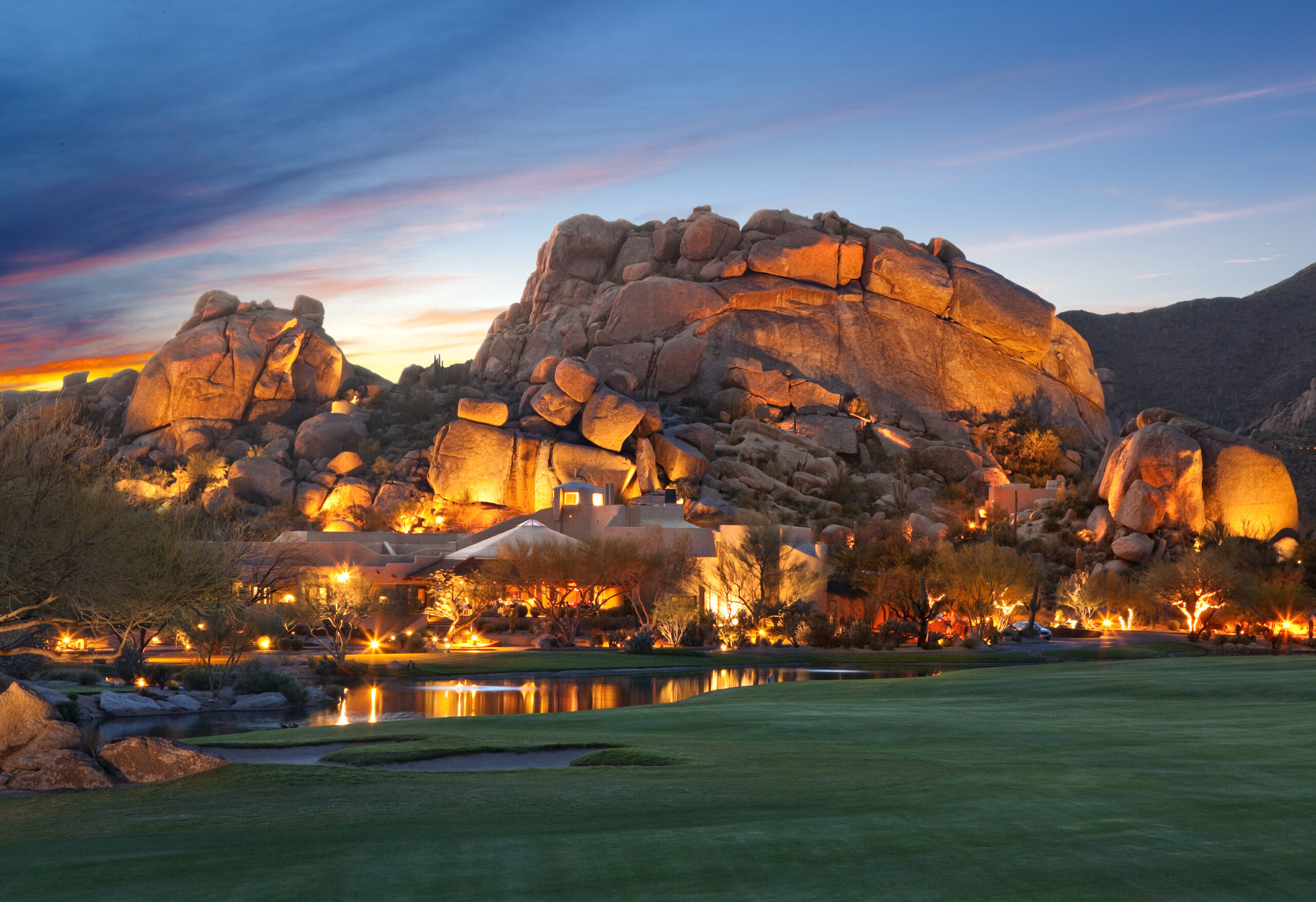
The Boulders
The visual experience of desert golf is dramatically different from what most golfers are accustomed to.
Desert landscapes can vary by geography, from the saguaro cacti of Arizona’s Sonoran Desert and arid mountainous surrounds of California’s Palm Springs to Nevada’s rugged canyon lands and New Mexico’s high desert terrain. But instead of the thick rough, deep bunkers, impenetrable gorse, or dense trees one might find at links-or parkland-style courses, the desert’s natural hazards and dry, rocky terrain provide a stark contrast to green swaths of fairway.
Take The Boulders Resort & Spa just north of Scottsdale in the town of Carefree, Arizona, where the massive 12-million-year-old granite boulders that give the property its name are as dramatic (and unusual) as they come. The two terrific 18-hole courses at The Boulders — one resort/public and the other private — twist through sandy wasteland, tall saguaros and other thorny desert plants, but it’s the prehistoric rock formations in the Sonoran Desert foothills that steal the show. The namesake boulders provide a ruggedly impressive backdrop for golf as well as its luxurious spa, stylish restaurants, and relaxing accommodations that range from adobe Casitas to haciendas and villas.
Visuals aren’t the only hallmark of desert golf courses, as their tighter confines — and premium on accuracy — often lead to the descriptor “target golf.” Miss the fairways or greens on a desert course and you might find yourself contending with cacti or in need of a beat-up “desert club” to extricate your ball from the dry, rocky terrain.
That said, the dry, warm nature of these locales lends itself to year-round play — drawing golfers from colder climates — and can often lead to some welcome distance gains. And you might come across some critters you won’t see on other golf courses, from roadrunners and rattlesnakes to bobcats and javelinas.
Beyond The Boulders, here are some of the other top public-access desert courses in the Western U.S.:
ARIZONA
Grayhawk Golf Club (Scottsdale): With 36 holes and multiple dining options, it’s no surprise Grayhawk has emerged as one of the most welcoming and popular daily-fee options in the golf-rich Scottsdale market. The Talon Course, designed by David Graham and Gary Panks, weaves through desert arroyos with dramatic box canyons and ravines. Meanwhile, the Raptor Course from Tom Fazio offers wider playing corridors but demands precise approach shots to well-protected greens.
TPC Scottsdale Stadium Course (Scottsdale): The better known of the two layouts at TPC Scottsdale, the Stadium Course is most famous for the stadium par-3 16th hole that steals the spotlight during the WM Phoenix Open, which annually boasts the largest crowds in golf. Designed by Tom Weiskopf and Jay Morrish, the course balances desert golf with playability, featuring generous fairways and challenging green complexes.
Troon North Golf Club (Scottsdale): For many, Troon North is the standard by which other desert golf experiences in the Scottsdale market are measured, with two terrific courses stretching through natural ravines and foothills in the shadows of Pinnacle Peak. Both the Weiskopf-designed Monument and Pinnacle courses are consistently rated among America’s top public courses, featuring immaculately groomed fairways set against a rugged landscape of massive granite boulder formations and desert vegetation.
Quintero Golf Club (Peoria): One of the best public courses in the Phoenix/Scottsdale area, this Rees Jones design maximizes the natural terrain in a pristine piece of Arizona desert with significant elevation changes. The par-3s at Quintero are especially memorable, playing across desert canyons with stunning mountain backdrops.
We-Ko-Pa Golf Club (Fort McDowell): Another award-winning, 36-hole offering in the scenic Sonoran Desert, We-Ko-Pa is set on Yavapai Nation Land and features stunning views of the surrounding mountains, including the iconic Four Peaks. Better yet, there are no homes or other developments. The Cholla course, a quintessential target style desert layout, was designed by Scott Miller, while the team of Bill Coore and Ben Crenshaw combined timeless links-style design with desert golf traits at the popular Saguaro Course.
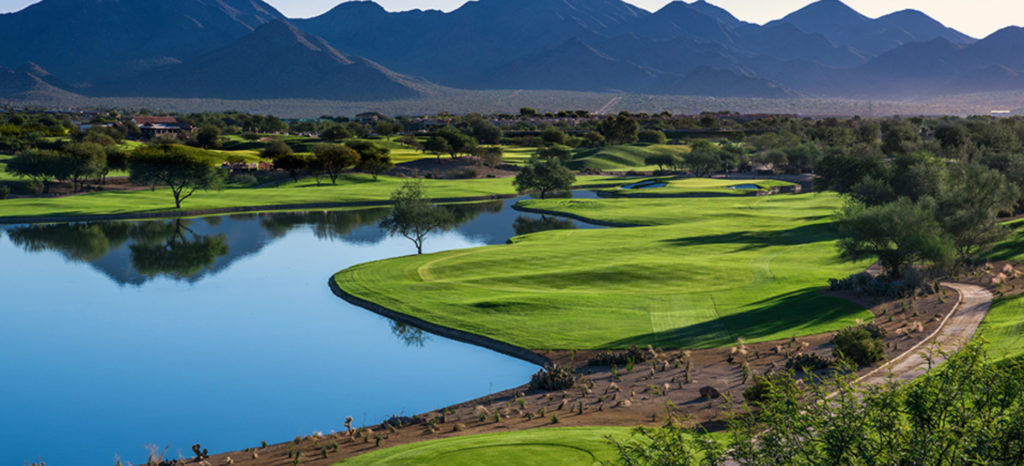
TPC Scottsdale
CALIFORNIA
Classic Club (Palm Desert): While water comes into play on 14 of the 18 holes at this Arnold Palmer design, this course is sited in the middle of a vast desert valley and is adjacent to the Coachella Valley National Wildlife Refuge. The layout, which was home to the PGA Tour’s Bob Hope Classic from 2006-2008 and has a closing par-5 named “Hope’s Skybox,” puts a slightly different spin on desert golf with rolling terrain, wide landing areas, 30 acres of water features, 14 bridges and an abundance of pine trees.
Desert Willow Golf Resort (Palm Desert): This resort in the heart of Palm Desert boasts 36 holes, but it’s the Firecliff Course that’s known in the Coachella Valley for its challenging layout and stunning desert panoramas, including majestic mountain views. Architects Dr. Michael Hurdzan and Dana Fry teamed on this course rooted in the desert landscape, blending design with environmental sensitivity.
Indian Wells Golf Resort (Indian Wells): Minutes away from the Palm Springs International Airport, Indian Wells is one of the few facilities with two 18s — Celebrity and Players — that have been ranked among the Top 25 municipal courses in the country. A former host of Golf Channel’s “Big Break” program, the pristine property has a lusher feel than some quintessential desert courses, with sculpted bunkers, mature trees and water features, the latter particularly a presence on the Clive Clark-designed Celebrity Course.
PGA West (La Quinta): Five of the nine courses at this golf resort and private club community in sunny Palm Springs are open to public play, perhaps most notably the Stadium and Nicklaus Tournament courses. Rugged mountains provide a breathtaking backdrop for a landscape that still bears the markings of an ancient ocean that covered the desert floor. The Stadium course at PGA West is famous for its rock-encircled island green 17th hole, one of the property’s many unique water hazards in a desert setting.
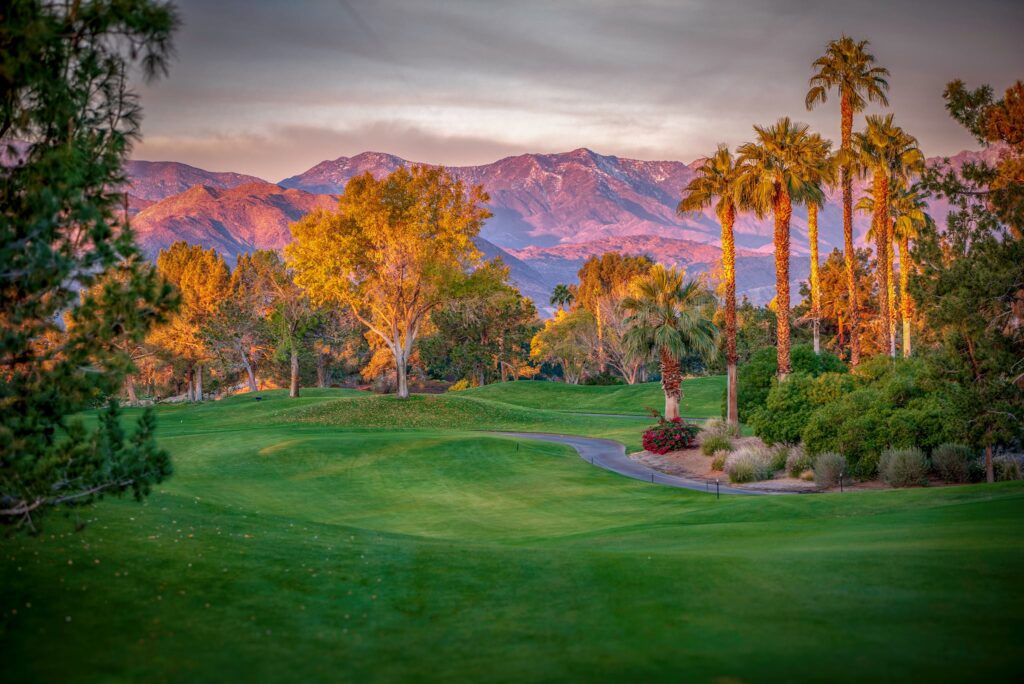
Indian Wells Golf Resort
NEVADA
Bear’s Best Las Vegas (Las Vegas): Jack Nicklaus selected 18 favorite holes from desert-style courses within his vast design portfolio and recreated them in a site surrounded by stunning desert scenery and inspiring views of Red Rock Canyon. This daily fee layout with a private feel pays tribute to special holes at places like Desert Mountain, Castle Pines, The Club at Las Campanas, PGA West, La Paloma, and Old Works.
Conestoga Golf Club (Mesquite): Located within the Del Webb active adult community of Sun City Mesquite, this 18-holer brilliantly uses the natural desert topography. Course designer Gary Panks created a course that undulates through canyons, with tamer elevation changes than nearby Wolf Creek but an abundance of rugged rock outcroppings framing the holes.
Las Vegas Paiute Golf Resort (Las Vegas): This oasis in the desert serves up a trio of Pete Dye championship courses, the only designs in Nevada created by the Hall of Fame architect. And they’re just 25 minutes from the Las Vegas Strip. While golfers will find signature Dye design elements such as railroad tie bunkers and sweeping slopes, each of the courses – Snow Mountain, Sun Mountain and Wolf – present different experiences.
Wolf Creek Golf Club (Mesquite): Just over an hour from Las Vegas, not far from the Arizona border, is one of the wildest rides in golf. You may have heard Wolf Creek likened to a real-world video game course, and it’s a fitting description, with emerald-green fairways and brilliant white bunkers splashed over some of the most ruggedly inhospitable looking terrain possible. There are extreme elevation changes, with holes running through dramatic desert canyons and up and down hills and ridges, delivering a host of forced carries and unrivaled views throughout the one-of-a-kind canvas.
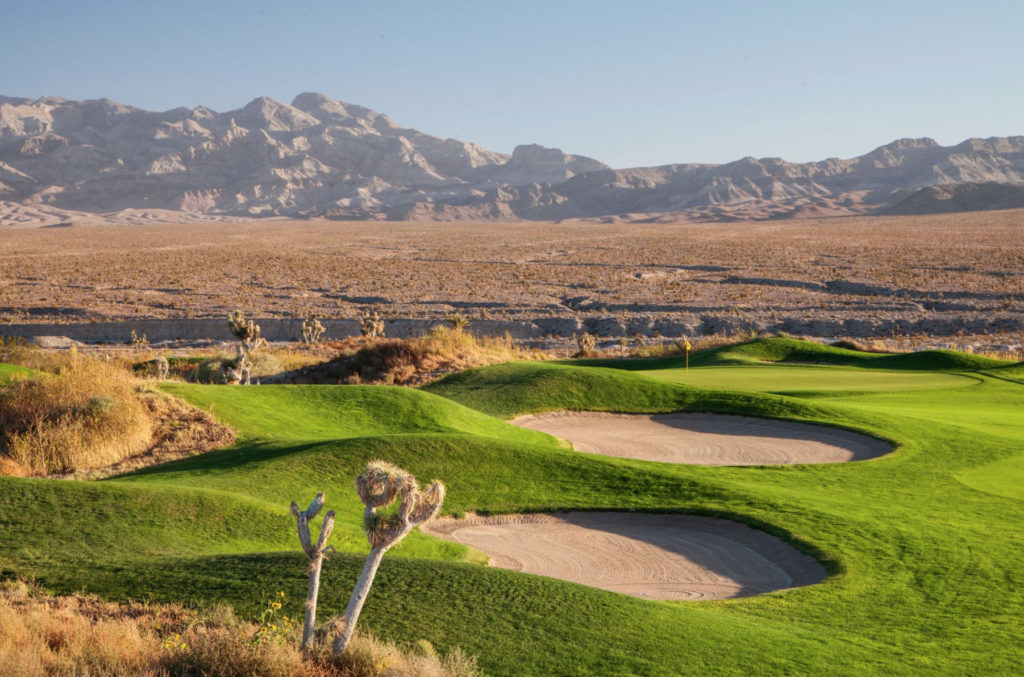
Las Vegas Paiute Golf Resort
NEW MEXICO
Black Mesa Golf Club (Espanola): This course nestled in the Espanola Valley near Santa Fe takes full advantage of the natural topography in a unique high desert setting. Fairways extend through mountainous valleys and dramatic sandstone ridges, with holes framed by unique rock formations and natural vegetation indigenous to the region in northern New Mexico. Not surprisingly, architect Robert Baxter Spann called Black Mesa the “most interesting and spectacular site” he’s ever had the opportunity to work with.
Paa-Ko Ridge Golf Club (Sandia Park): Just outside Albuquerque, this challenging and award-winning layout (which has been recognized as the No. 1 course in New Mexico), is situated 6,500 feet above sea level on the east side of the Sandia Mountains. It’s an elevated offering that mixes high desert golf and its arroyos and rocking outcroppings with ponderosa pine trees. The three 9’s at Paa-Ko were designed by Ken Dye, who is no relation to renowned golf architect Pete Dye or his family, though he too has a hole nicknamed “Dye-abolical.”
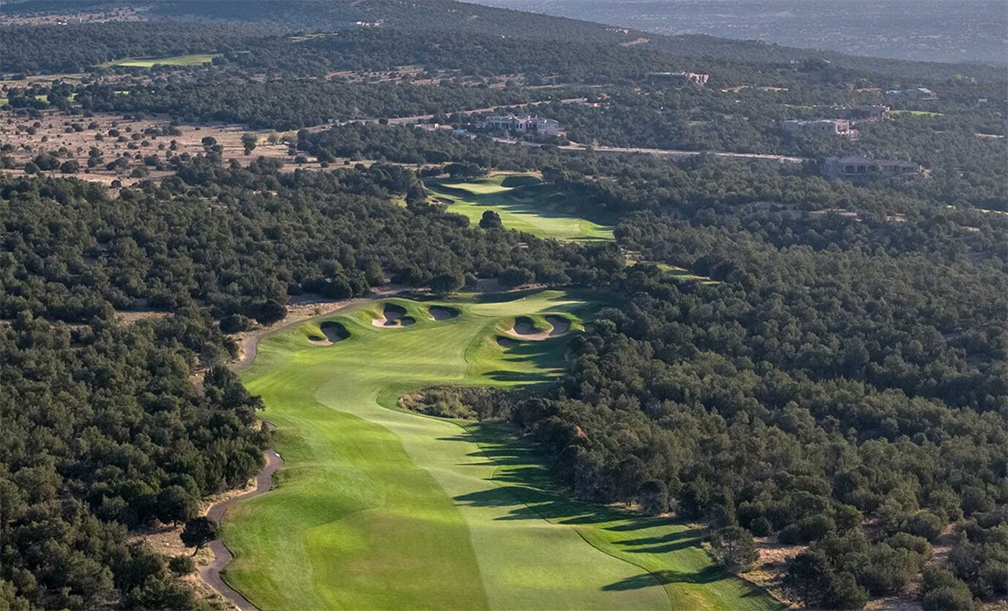
Paa-Ko Ridge Golf Club

